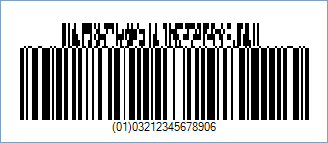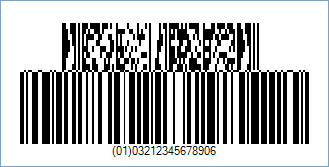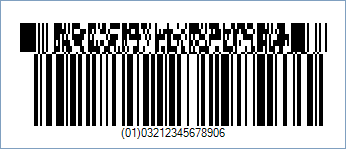

This Symbology is also known as GS1-128 Composite Barcode, GS1-128 CC-A (CCA), GS1-128 CC-B (CCB), GS1-128 CC-C (CCC), GS1-128 Composite A, GS1-128 Composite B, GS1-128 Composite C, GS1-128 2D Composite, GS1-128 Composite Component A, GS1-128 Composite Component B, GS1-128 Composite Component C
This Barcode Symbology is supported by the following Neodynamic products: In Barcode Composite Symbology, the linear component encodes the item's primary identification while the adjacent 2D Composite Component (abbreviated as CC) encodes supplementary data, such as a batch number and expiration date. The Composite Symbol always includes a linear component so that the primary identification is readable by all scanning technologies. The Composite Symbol always includes a multi-row 2D Composite Component that can be read with linear- and area-CCD scanners, and with linear and rastering laser scanners. The 2D Composite Component is printed above the linear component and both are separated by a separator pattern.
In Barcode Composite Symbology, the linear component encodes the item's primary identification while the adjacent 2D Composite Component (abbreviated as CC) encodes supplementary data, such as a batch number and expiration date. The Composite Symbol always includes a linear component so that the primary identification is readable by all scanning technologies. The Composite Symbol always includes a multi-row 2D Composite Component that can be read with linear- and area-CCD scanners, and with linear and rastering laser scanners. The 2D Composite Component is printed above the linear component and both are separated by a separator pattern.
Code property = (01)03212345678906|1A1B2C3D4E5F6G7H8 (Primary Data = (01)03212345678906 and Secondary Data = 1A1B2C3D4E5F6G7H8), Symbology property = GS1128CCA, AddChecksum property = True will produce the following barcode image:

Code property = (01)03212345678906|1A1B2C3D4E5F6G7H8 (Primary Data = (01)03212345678906 and Secondary Data = 1A1B2C3D4E5F6G7H8), Symbology property = GS1128CCB, AddChecksum property = True will produce the following barcode image:

Code property = (01)03212345678906|1A1B2C3D4E5F6G7H8 (Primary Data = (01)03212345678906 and Secondary Data = 1A1B2C3D4E5F6G7H8), Symbology property = GS1128CCC, AddChecksum property = True will produce the following barcode image:
